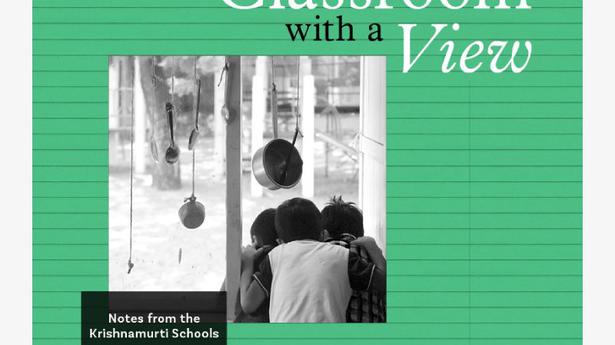
Classroom with a View review: Nature walks, culture class, question hour — schools with a difference
The Hindu
Glimpses of everyday practices that give students the time and space to enjoy their education, not learn by rote
An art student in Class 11 sits alone for hours every week in art class, kneading clay into shapes. He is not particularly skilled in clay work, nor is he keen to learn new clay techniques. He is just content with the feel of clay.
This is the story of a boy who went on to become a noted writer and academic. Years later he told his art teacher that his work with clay, making something, viewing it, breaking it down and rebuilding it all over again, all of it had helped him become a writer, as this was what he did in his writing as well.
How can any educational endeavour solely based on immediately measurable outcomes hope to allow such time and space, as the boy got? This is the kind of reflection that Ashwin Prabhu’s book gives rise to. Classroom with a View talks of the educational tropes in a group of schools in India that seek to practise what philosopher J. Krishnamurti talked of in his transformative vision of education. Widely respected and dismissed as “alternate schools” and “bubbles”, these schools tend to be seen as elitist. Prabhu offers glimpses of everyday practices here that have relevance for the system at large.
Practices such as “culture class” and “circle time” involve teachers and children discussing themes in an open-ended manner.
A girl, for instance, asks, “Why am I always trying to please others?” and the teacher is reminded of conundrums he had faced at that age. Nature walks and class trips without a fixed agenda open up opportunities for many styles of learning. Multidimensional projects in which everyone participates help students pursue ideas to conclusion in work with others. Boys and girls playing games and dancing together learn to co-exist without being in competition. Activity is valued in itself, rather than spurred on by punishment or rewards. Children engaged in community service learn to work for others. In mixed-age groups, children of Classes 2, 3 and 4 learn from one another.
Time and space for art and craft, and engaging with the natural and social environment nurture sensitivity in students. Children are encouraged to talk about their fears, and to seek help when they need. Multiple modes of assessment are used, but exams carrying marks start only in Class 9.
In all this, what comes across are educational experiences that emphasise on talking, listening, attention to nature, working with hands and material and togetherness.













